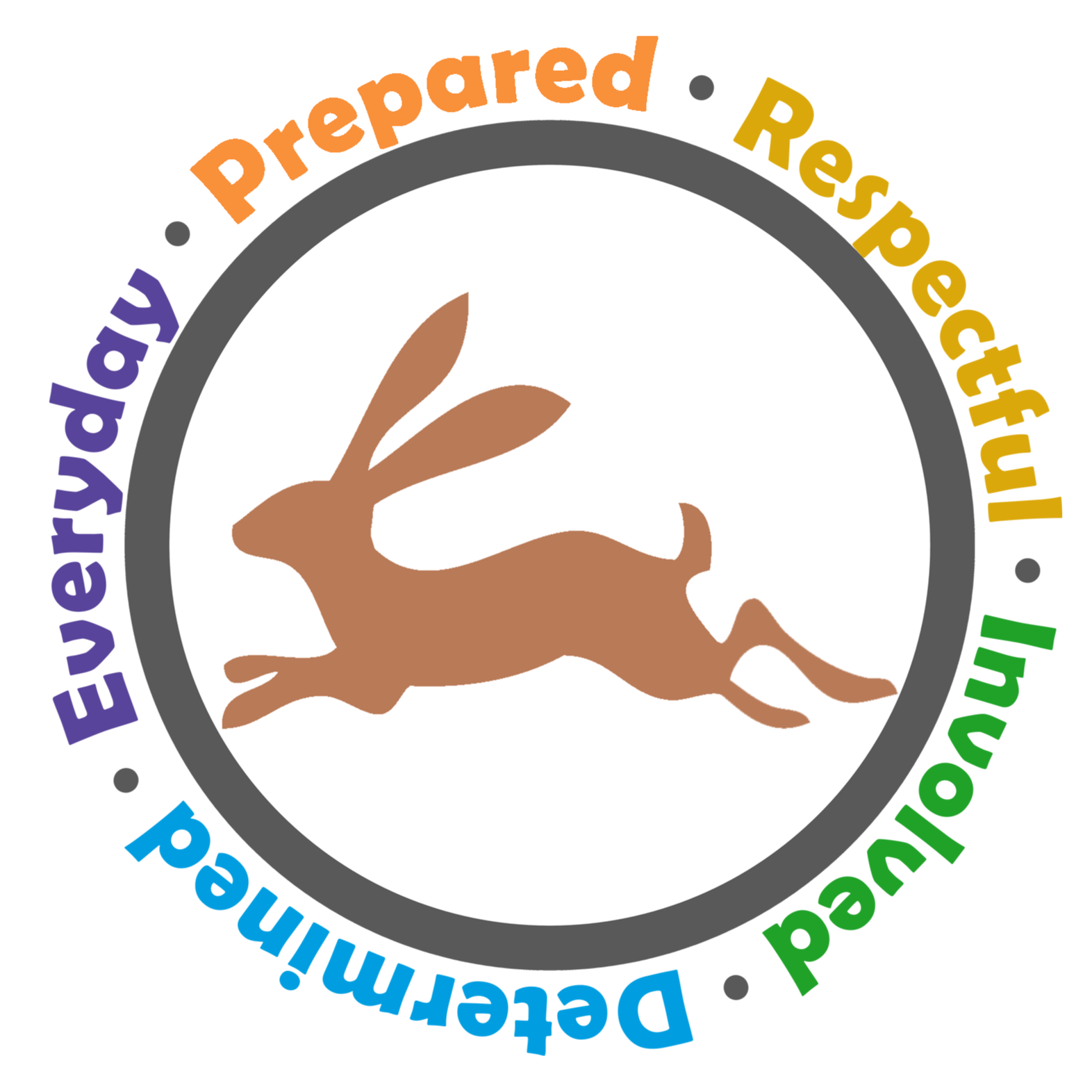How We Teach Phonics and Early Reading
Phonics Statement
At Harefield Primary School, we give a high priority to the teaching of phonics as we know that reading is a lifelong skill that unlocks all learning. Our aim is for all pupils to leave our school being able to read fluently and have a love of reading. Therefore, we are dedicated to ensuring that early reading, through phonics, is taught effectively every day.
Approach
It is essential that our approach to teaching phonics and reading is accessible to all learners, regardless of background. We adopt the synthetic phonics approach through the Little Wandle scheme. Synthetic phonics is the process of sounding out the individual sounds in an unknown word and then blending these sounds together in order to read the word. The scheme teaches the sounds in an order which allows them to quickly begin to put sounds together to read words. For example, many words can be created from the letters SATPIN, whereas very few could be built using the initial letters of the alphabet ABCDE.
Tricky words
Alongside the skills of blending (putting sounds together to read) and segmenting (breaking words down to spell them), the children are also taught ‘tricky words’. These are words that cannot be sounded out, such as 'was' or 'me'. They learn to read and to spell these from memory within each phase.
Reception and Year 1
Phonic sessions are taught daily following the Little Wandle scheme of progression.
The following overview shows the progression of the taught grapheme-phoneme correspondences (GPCs) and tricky words that we teach term by term. The progression has been organised so that pupils are taught from the simple to more complex GPCs, as well as taking into account the frequency of their occurrence in the most commonly encountered words. All the graphemes taught are practised in words, sentences, and later on, in fully decodable books. Pupils review and revise GPCs and words, daily, weekly and across terms and years, in order to move this knowledge into their long-term memory.
Any pupil that needs additional practice has daily ‘keep-up’ support taught by a fully trained adult. Keep-up lessons match the structure of class teaching, and use the same procedures, resources and mantras, but in smaller steps with more repetition, so that every pupil secures their learning.

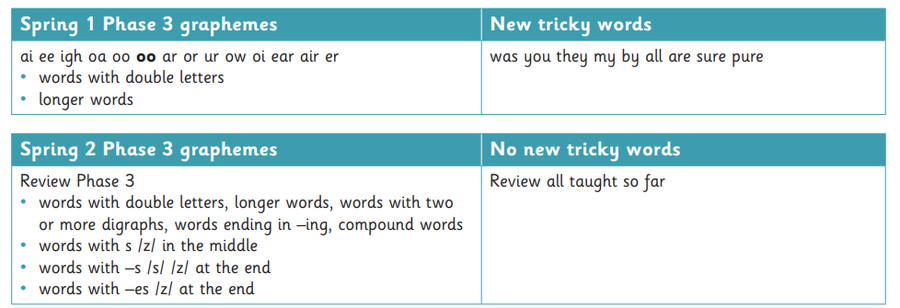
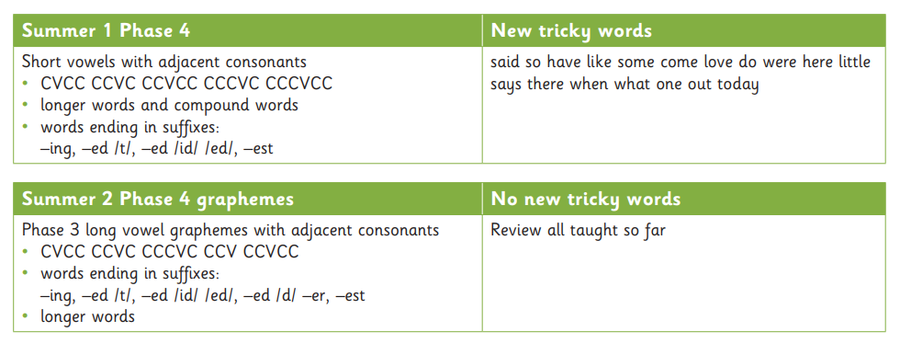

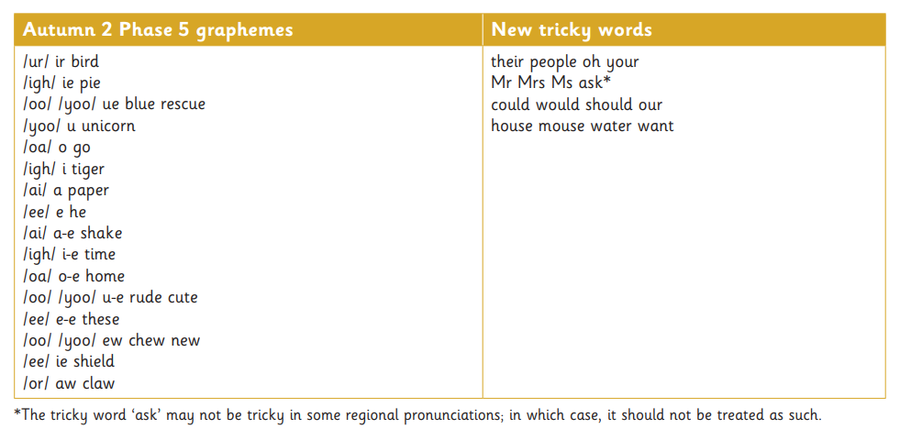
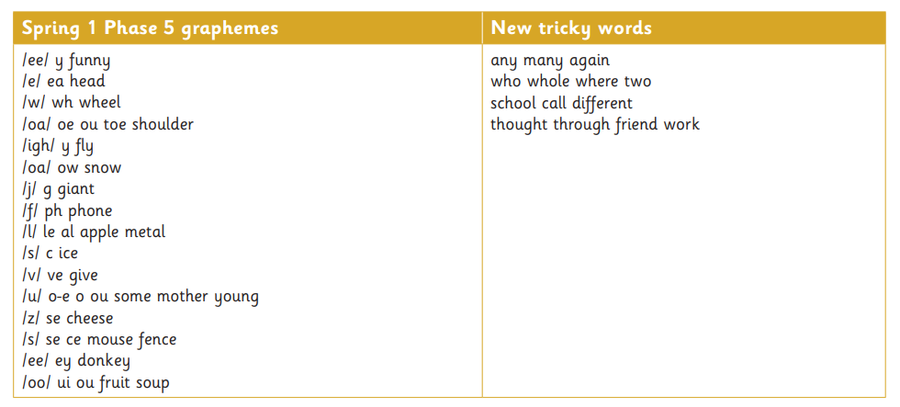
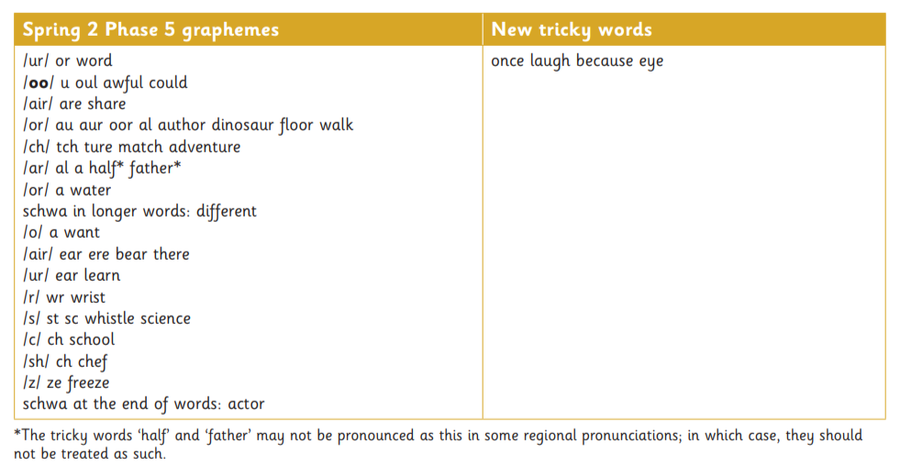
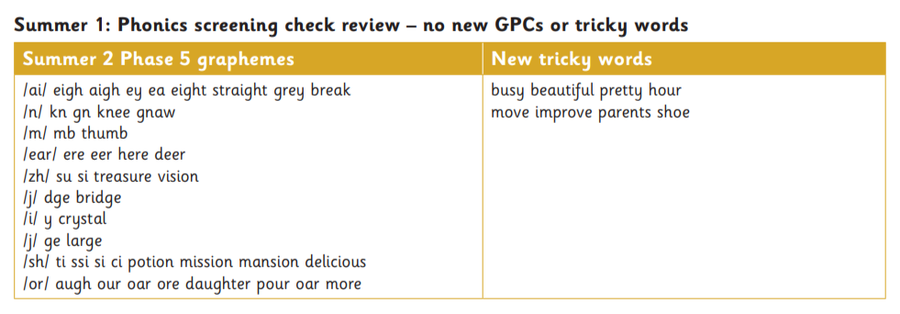
By the end of Year 1 pupils will be taught all the GPCs.
All pupils complete the national phonics screening in Year 1 during a specified week in June. Any pupils who did not take the test or did not pass the test in Year 1 will retake it again in Year 2.
Those pupils who do not pass the screening at the end of Year 2 will continue to receive focused Phonics teaching in Year 3.
Year 2
The pupils in Year 2 will continue to use all their phonic knowledge and alternative spellings for phonemes to develop their reading fluency and their accuracy in spelling.
They will use the ‘Grow the Code’ grapheme chart to support them with this:
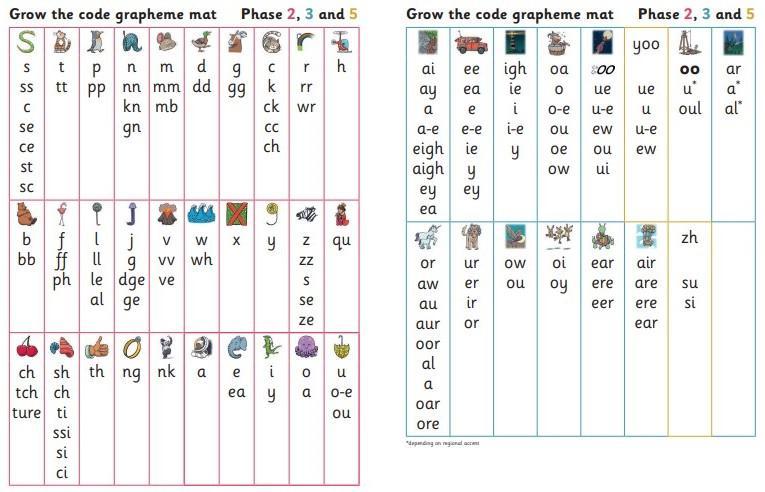
Words your child might use when talking about phonics:
|
Phoneme |
Phonemes are the smallest unit of speech - sounds which make up a word. If you change a phoneme in a word, you would change its meaning. For example, there are three phonemes in the word sit /s/-/i/-/t/. If you change the phoneme /s/ for /f/, you have a new word, fit. If you change the phoneme /t/ in fit for a /sh/, you have a new word, fish - /f/-/i/-/sh/. |
|
Grapheme |
Graphemes are the written representation of sounds – the letters. |
|
Digraph |
A grapheme containing 2 letters that makes just one sound, eg /sh/ in shop or /ch/ in chip. |
|
Trigraph |
A grapheme containing 3 letters that makes just one sound, eg /air/ in pair or /igh/ in night. |
|
Split digraph |
A grapheme containing 2 letters but are separated by another sound, eg ‘ae’ in make is separated by the sound /k/ so it is split /a-e/. |
|
Blend |
The process of putting individual sounds together to read a word, eg sh–o-p, shop. |
|
Segment |
The process of breaking a word into individual sounds to spell a word. |
|
Sound buttons |
Teachers might use these under words to indicate whether the sound is a single letter sound (dot) or a digraph/trigraph (dash) to help children to blend the sounds correctly in the word, eg shop.
|
There is a parents section on the Little Wandle website for further details on how best to support your child/children at home:
www.littlewandlelettersandsounds.org.uk/resources/for-parents/
